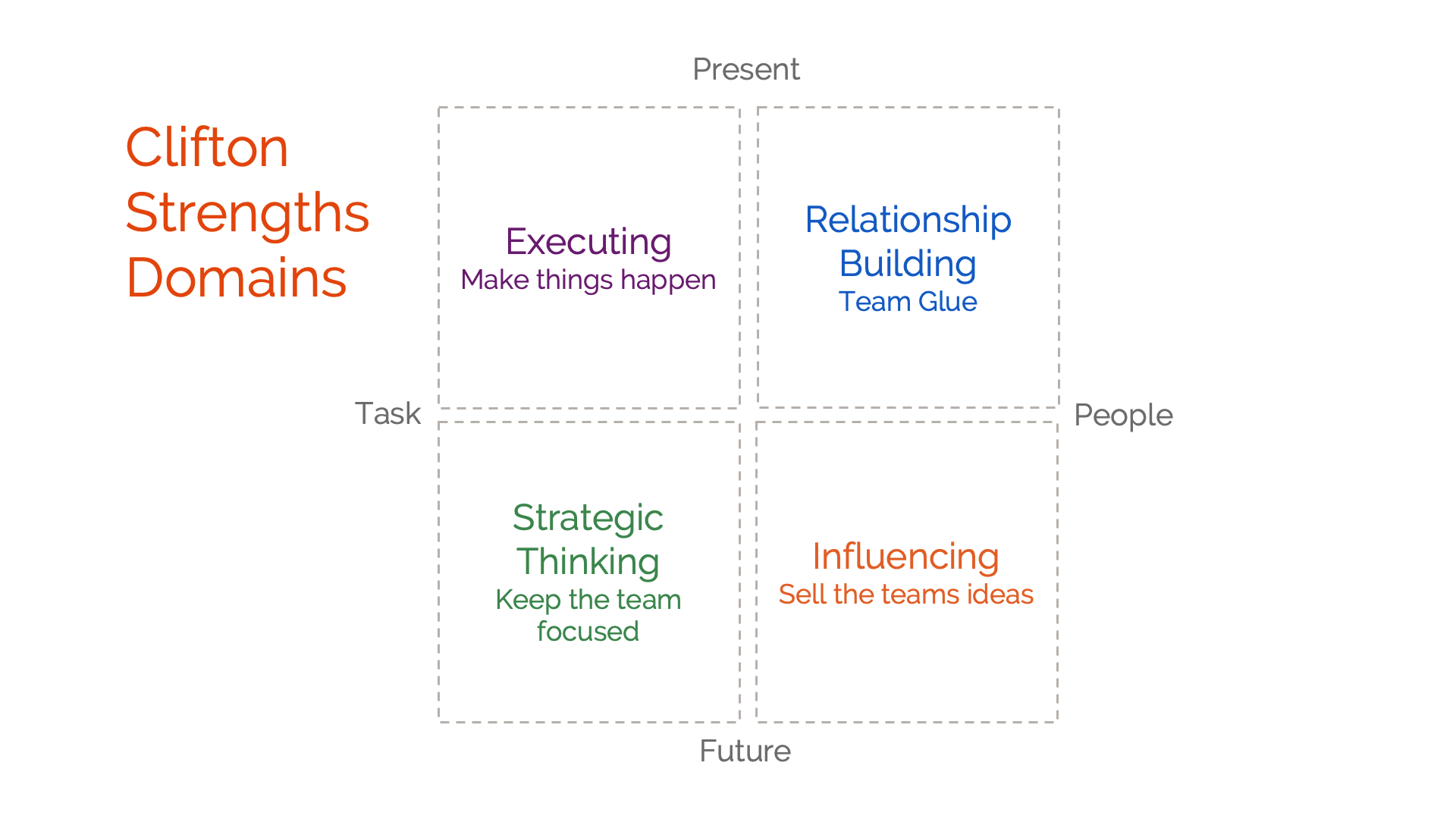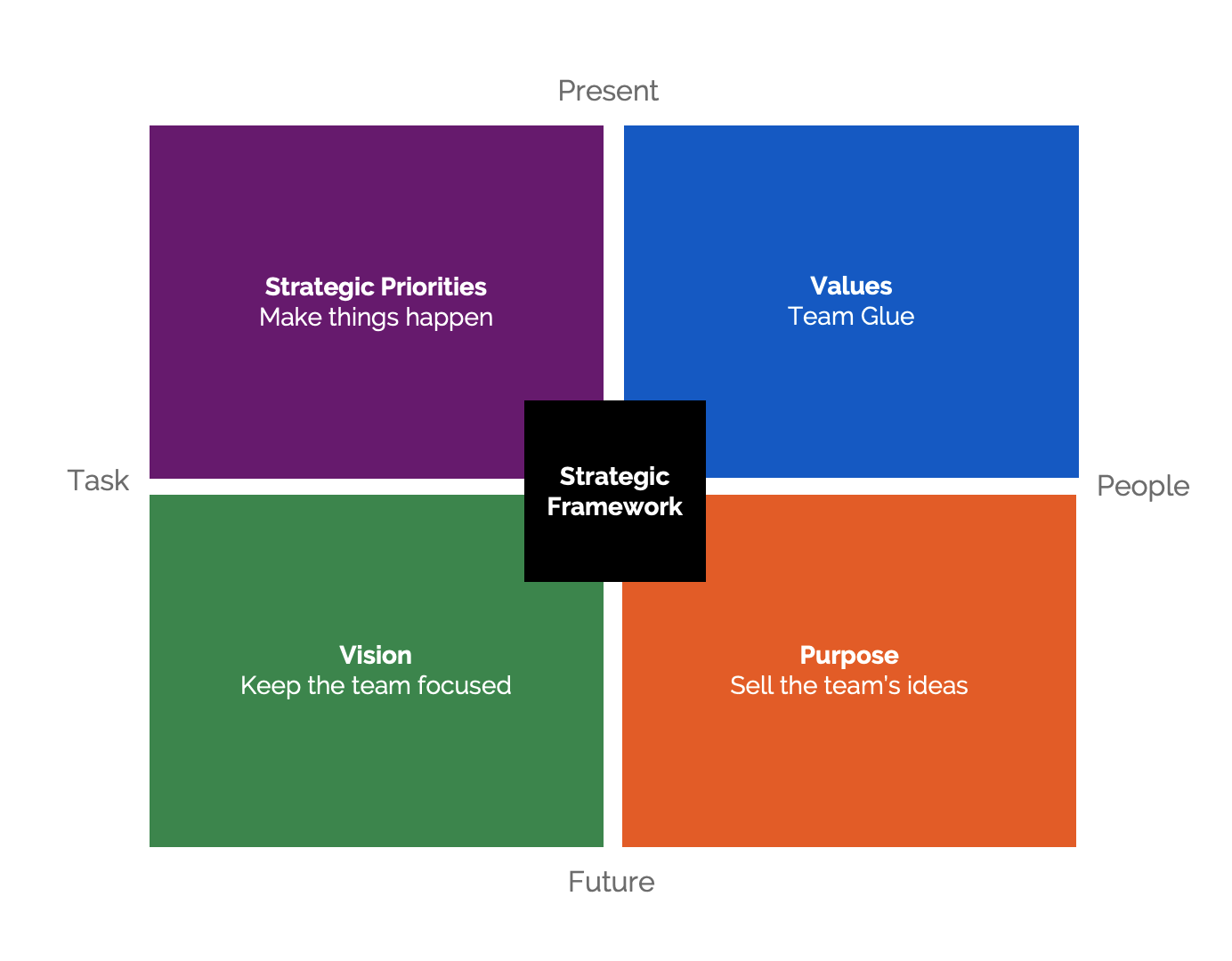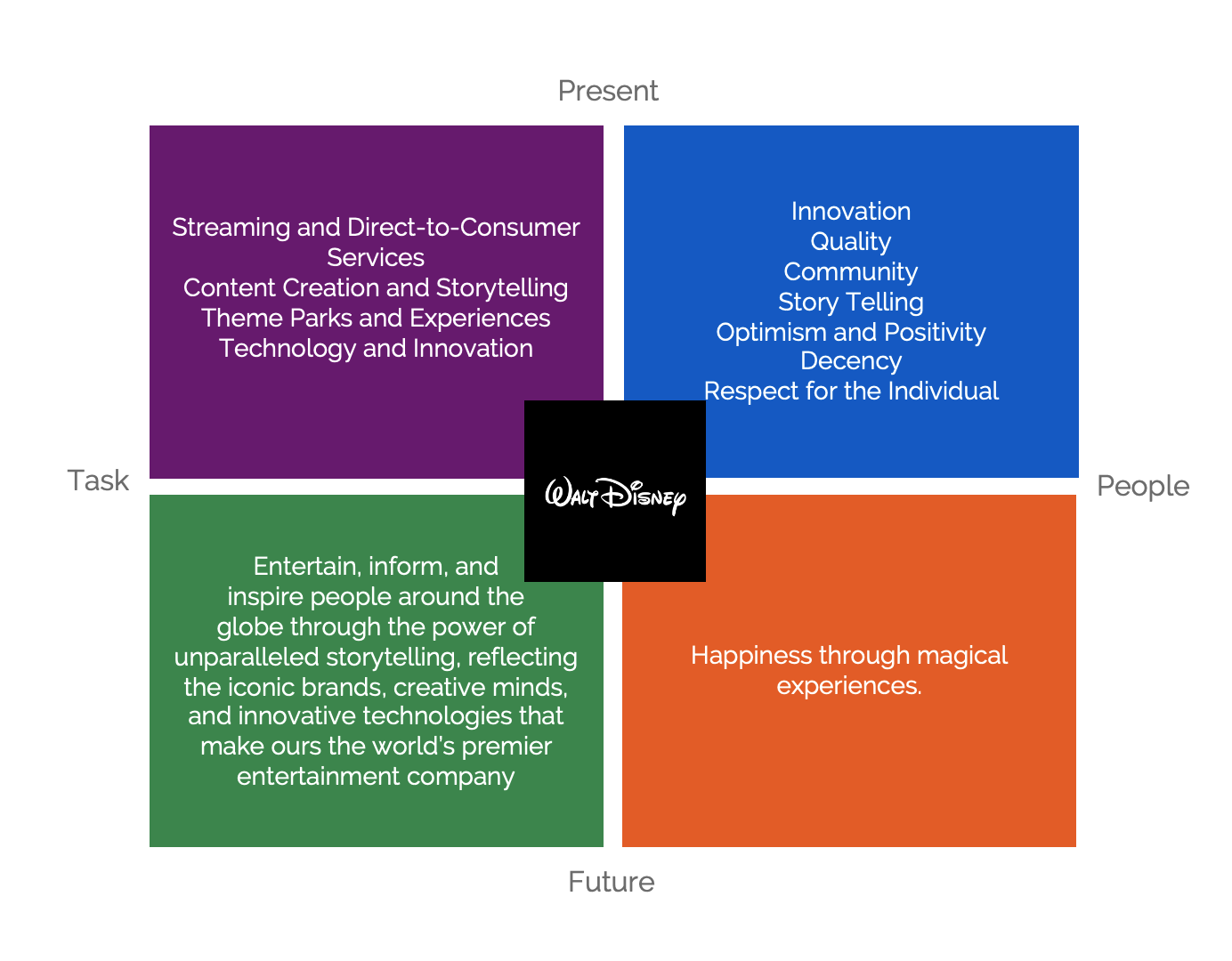Simplify Your Strategy Like a Boss: A Simple Way to Connect Strategy with Your People
The biggest challenge with corporate strategy is making it real for teams. Too often, it feels distant and disconnected from their daily tasks, leaving them unsure of how to take action or see its impact.
The CliftonStrengths Domains tool provides a shortcut to understanding a team’s strengths. Remembering all 34 themes can feel like a challenge, but by grouping them into common themes, things get a lot clearer. There are four core domains:
Strategic Thinking These are the people who excel at absorbing information and analysing it to make better, more informed decisions.
Influencing These individuals take charge, speak up, and ensure that others’ voices are heard.
Relationship Building These are the connectors. They build relationships that strengthen a team and turn it into something greater than the sum of its parts.
Executing These folk are the doers. They make things happen.
But here’s where things get interesting: when you combine two domains, it unlocks a deeper level of insight. Suddenly, you can identify who is best suited to:
Determine the task: What should we do?
Focus on the present: What’s important right now?
Lift our gaze to the future: What should we focus on in the long term?
Focus on what truly matters: What’s best for our people and culture?
I’ve been collaborating with a client to apply this framework as a straightforward yet powerful way to communicate their strategy—vision, purpose, values, and strategic priorities. By aligning it with the team’s strengths, it does a few key things:
It provides a practical checklist for teams, helping them make decisions, stay on track, and keep initiatives aligned—without getting too rigid.
It offers insight into where the team naturally excels, what they’ll gravitate towards, and where they can focus their energy.
It uncovers potential challenges, highlighting areas where the team might struggle, so they can identify the right partners or processes to support them.
Each section of this framework can be brought to life in a workshop, where the team leverages its collective strengths to create or validate the content to take ownership. By asking and answering the right questions, you get results.
Strategic Thinking is all about vision. What result do we want to see, feel, and hear? Why do we want to achieve this? Who can help us get there? How are we going to make it happen?
Influencing drives purpose. As Simon Sinek wisely puts it, starting with “why” is powerful. What specific contribution have you made to the lives of others? And how have those contributions empowered others to do or become something more?
Relationship Building reflects values. What do we want people to say or do? These are the things an organisation holds dear.
Executing is where we focus on the strategic priorities. What are the three initiatives that will truly make a difference? By reflecting on questions like: What’s working? Where are we getting stuck? What can we do differently?
It made me wonder—what if this framework could be extended to other organisations? Below, I’ve explored examples for Air New Zealand and Walt Disney, inspired by their published strategies. This approach offers a sharp lens for examining existing strategies, identifying where the emphasis falls across the four quadrants, and provoking thoughtful questions. Is this balance fit for purpose? Does it serve the strategy’s goals? Or does it reflect the personal biases of the leadership team more than it should?
When strategy is clear and connected, it moves from being a distant idea to something teams can act on. By aligning their strengths with the bigger picture, they don’t just understand the strategy—they bring it to life, knowing exactly who to call on to make it happen. That’s where real change begins.




